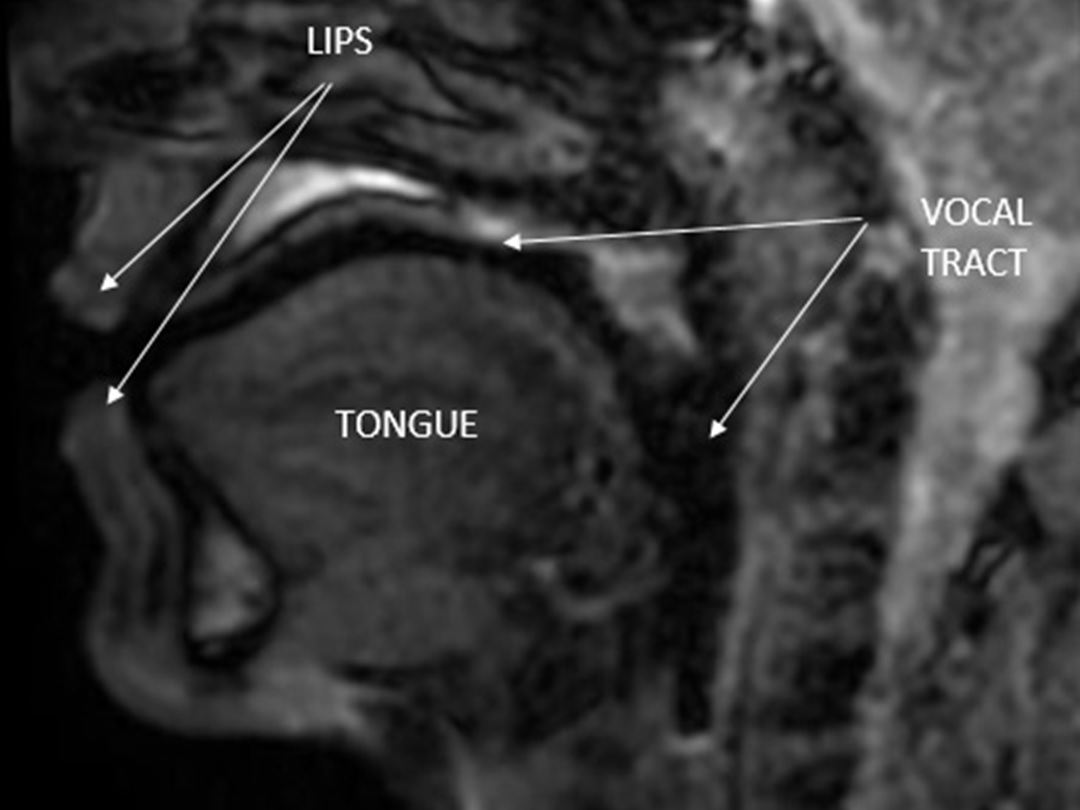Fisiología del tracto vocal y su evaluación por resonancia magnética
Vocal tract physiology and its MRI evaluation

Esta obra está bajo una licencia internacional Creative Commons Atribución-NoComercial-SinDerivadas 4.0.
Mostrar biografía de los autores
Introducción. La rápida evolución tecnológica en la resonancia magnética (MRI) ha ofrecido recientemente una gran oportunidad para el análisis de la producción de voz.
Objetivos. Este artículo tiene como objetivo describir los principales principios fisiológicos en la base de la producción de la voz (en particular, del tracto vocal) y una descripción general de la literatura sobre resonancia magnética del tracto vocal. Esto se presenta con el fin de analizar tanto los resultados actuales como las perspectivas futuras.
Método. Se realizó una revisión narrativa mediante la búsqueda de los términos MeSH "tracto vocal" y "MRI" en la base de datos PubMed. Los estudios obtenidos se seleccionaron posteriormente por relevancia.
Resultados. Los campos principales descritos en la literatura se refieren a la viabilidad técnica y optimización de secuencias de resonancia magnética, modificaciones del tracto vocal en una vocal o fonética articulatoria, modificaciones del tracto vocal en el canto, reproducción 3D del tracto vocal y segmentación y descripción del tracto vocal en condiciones patológicas.
Conclusiones. La resonancia magnética es potencialmente el mejor método para estudiar la fisiología del tracto vocal en el momento de la producción de la voz. Los estudios más recientes han obtenido buenos resultados en la representación de cambios en el tracto vocal durante la emisión de vocales y el canto. Se necesitan más desarrollos en la técnica de RM para permitir un estudio igualmente detallado de los movimientos más rápidos que participan en la articulación del habla, lo que permitirá perspectivas fascinantes en el uso clínico.
Visitas del artículo 982 | Visitas PDF 513
- Brown MA, Semelka RC. MR imaging abbreviations, definitions, and descriptions: a review. Radiology. 1999;213:647–62. doi: https://doi.org/10.1148/radiology.213.3.r99dc18647.
- Harrington J, Cassidy S. Techniques in speech acoustics. Text, speech and language technology. Dordrecht: Springer; 1999. doi: https://doi.org/10.1007/978-94-011-4657-9
- Stevens KN, Kasowski S, Fant CGM. An electric analog of the vocal tract. J Acoust Soc Am. 1953;25(4):734. doi: https://doi.org/10.1121/1.1907169
- Fant, G. The acoustic theory of speech production. The Hague: Mouton; 1960.
- Stevens KN, House AS. Perturbation of vowel articulations by consonantal context: an acoustical study. J. Speech Hear. Res. 1963;6:111–28. doi: https://doi.org/10.1044/jshr.0602.111
- Behrens S, Blumstein SE. On the role of the amplitude of the fricative noise in the perception of place of articulation in voiceless fricative consonants. J Acoust Soc Am. 1988 Sep;84(3):861-7. doi: https://doi.org/10.1121/1.396655.
- Stevens KN. On the quantal nature of speech. J Phon. 1989;17:3-45. doi: https://doi.org/10.1016/S0095-4470(19)31520-7
- Flanagan JL. Speech analysis synthesis and perception. 2nd Ed. New York: Springer-Verlag; 1972. doi: https://doi.org/10.1007/978-3-662-01562-9
- Manzano Aquiahuatl, C., Guzmán, M. Rehabilitación vocal fisiológica con ejercicios de tracto vocal semiocluido. Revista de Investigación e Innovación en Ciencias de La Salud. 2021;3(1):61–86. doi: https://doi.org/10.46634/riics.68
- Sulter AM, Miller DG, Wolf RF, Schutte HK, Wit HP, Mooyaart EL. On the relation between the dimensions and resonance characteristics of the vocal tract: a study with MRI . Magn Reson Imaging. 1992;10(3):365-73. doi: https://doi.org/10.1016/0730-725x(92)90507-v
- Lingala SG , Sutton BP, Miquel ME, Nayak KS. Recommendations for real-time speech MRI. J Magn Reson Imaging. 2016 Jan;43(1):28-44. doi: https://doi.org/10.1002/jmri.24997
- Birkholz P, Kürbis S, Stone S, Häsner P, Blandin R, Fleischer M. Printable 3D vocal tract shapes from MRI data and their acoustic and aerodynamic properties. Sci Data. 2020 Aug 5;7(1):255. doi: https://doi.org/10.1038/s41597-020-00597-w
- Eslami M, Neuschaefer-Rube C, Serrurier A. Automatic vocal tract landmark localization from midsagittal MRI data. Sci Rep. 2020 Jan 30;10(1):1468. doi: https://doi.org/10.1038/s41598-020-58103-6.
- Vasconcelos MJ, Ventura SM, Freitas DR, Tavares JM. Towards the automatic study of the vocal tract from magnetic resonance images. J Voice. 2011 Nov;25(6):732-42. Epub 2010 Oct 16. doi: https://doi.org/10.1016/j.jvoice.2010.05.002.
- Echternach M, Markl M, Richter B. Dynamic real-time magnetic resonance imaging for the analysis of voice physiology. Curr Opin Otolaryngol Head Neck Surg. 2012 Dec;20(6):450-7. doi: https://doi.org/10.1097/MOO.0b013e3283585f87
- Bresch E, Narayanan S. Real-time magnetic resonance imaging investigation of resonance tuning in soprano singing. J Acoust Soc Am. 2010 Nov;128(5):335-41. doi: https://doi.org/10.1121/1.3499700
- Echternach M, Sundberg J, Arndt S, Markl M, Schumacher M, Richter B. Vocal tract in female registers--a dynamic real-time MRI study. J Voice. 2010 Mar;24(2):133-9. Epub 2009 Jan 29. doi: https://doi.org/10.1016/j.jvoice.2008.06.004.
- Echternach M, Sundberg J, Baumann T, Markl M, Richter B. Vocal tract area functions and formant frequencies in opera tenors' modal and falsetto registers. J Acoust Soc Am. 2011 Jun;129(6):3955-63. doi: https://doi.org/10.1121/1.3589249
- Barbiera F, Lo Casto A, Murmura B, Bortoluzzi G, Orefice I, Gucciardo AG. Dynamic Fast Imaging Employing Steady State Acquisition Magnetic Resonance Imaging of the Vocal Tract in One Overtone Male Singer: Our Preliminary Experience. J Voice. 2020 Jun 26;1997(20):30184-3. doi: https://doi.org/10.1016/j.jvoice.2020.05.016
- Hagedorn C, Proctor M, Goldstein L, Wilson SM, Miller B, Gorno-Tempini ML, Narayanan SS. Characterizing Articulation in Apraxic Speech Using Real-Time Magnetic Resonance Imaging. J Speech Lang Hear Res. 2017 Apr 14;60(4):877-891. doi: https://doi.org/10.1044/2016_JSLHR-S-15-0112
- Yamasaki R, Behlau M, do Brasil OdeO, Yamashita H. MRI anatomical and morphological differences in the vocal tract between dysphonic and normal adult women. J Voice. 2011 Nov;25(6):743-50. doi: https://doi.org/10.1016/j.jvoice.2010.08.005
- Yamasaki R, Murano EZ, Gebrim E, Hachiya A, Montagnoli A, Behlau M, Tsuji D. Vocal Tract Adjustments of Dysphonic and Non-Dysphonic Women Pre- and Post-Flexible Resonance Tube in Water Exercise: A Quantitative MRI Study. J Voice. 2017 Jul;31(4):442-454. doi: https://doi.org/10.1016/j.jvoice.2016.10.015



